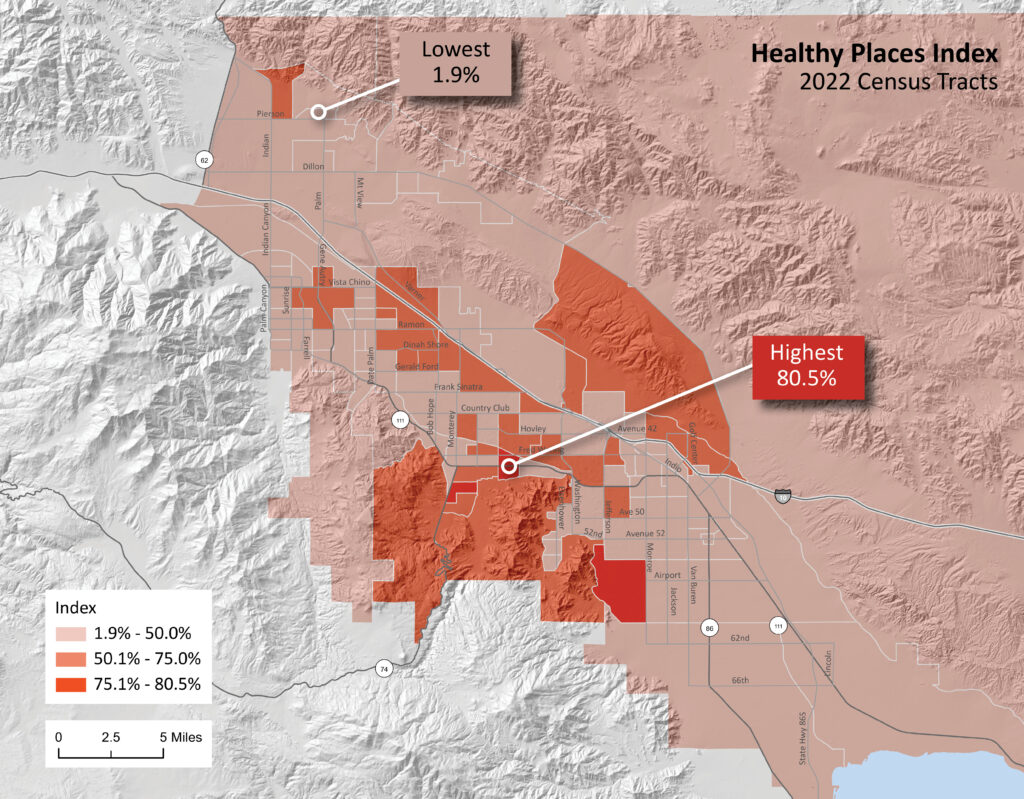Sometimes, when our newsletter deadline is looming, I must force myself to stop searching for data. GIS gives one access to an overwhelming amount of geographic and demographic information. Often, I just can’t make a choice! One great source of regional data is the Southern California Association of Governments (SCAG). CVEP’s illustrious former Board chair Jan Harnik is currently the President of SCAG and has encouraged me to make good use of their resources. They have created an excellent Regional Data Platform designed for data sharing and planning. Today’s map is derived from one of their curated datasets – the Healthy Places Index (HPI). The Public Health Alliance of Southern California developed this tool to assess the overall health of local communities based on a variety of social determinants of health, like access to parks and voting participation.
This map displays the composite HPI score by US Census tract. High percentage values indicate healthy communities. For instance, the census tract in Indian Wells with the highest health indicators means that it is healthier than 80.5% of other California tracts. By contrast, only 1.9% of tracts have a lower HPI score than the lowest Coachella Valley tract in Desert Hot Springs.

This table compares the valley’s highest and lowest HPI scores with the derived percentage scores for each of the individual health indicators. These individual scores are the basis for the algorithm of the overall HPI score. These scores have the updated 2022 values while the map is still based on the original 2017 data.
Note the great disparities between indicators for the two tracts. In only three of the nine domain scores does Desert Hot Springs come out on top: neighborhood, clean environment, and diversity index.
The indicator data were gathered from publicly available sources. These non-medical factors are often called health determinants or social determinants of health and “form the root causes of health advantage.” HPI helps community leaders and agencies compare the health and well-being of local communities and quantify the dynamics that shape health. Such comparisons bolster efforts to “prioritize equitable community investments, develop critical programs and policies across the state, and much more.”









